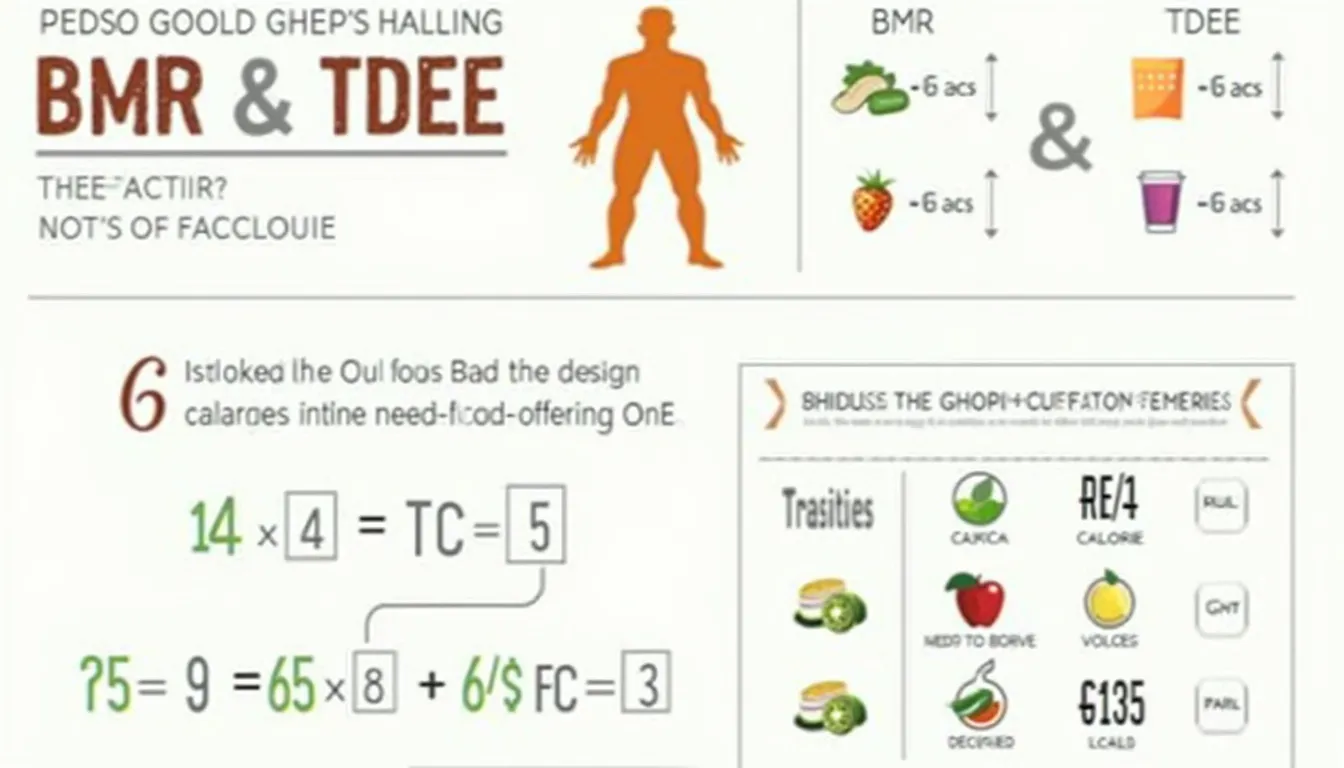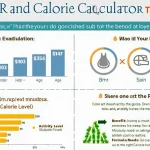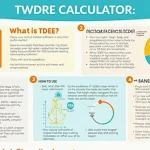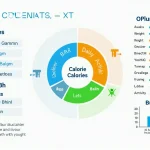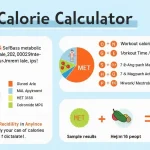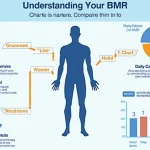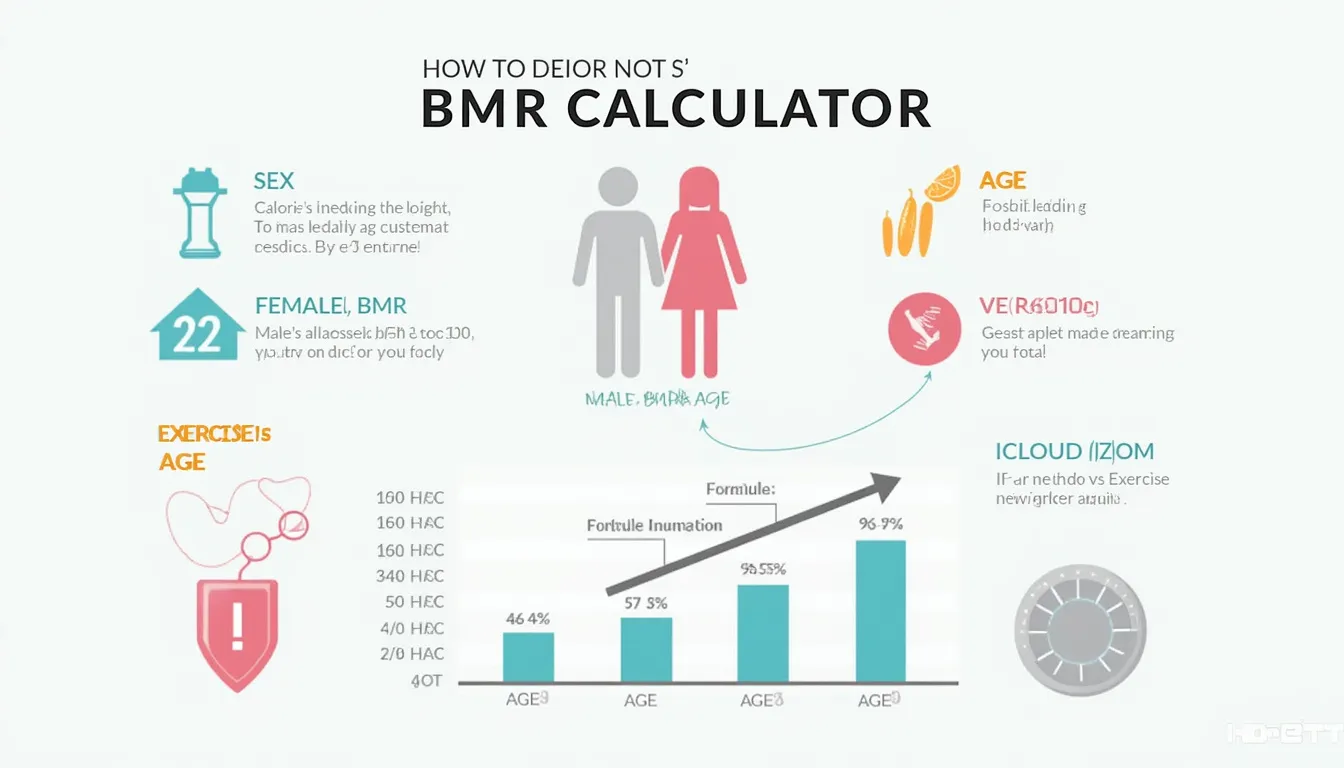BMR and TDEE Calculator
Is this tool helpful?
How to use the tool
- Weight (lbs): type your current weight, e.g., 135 or 195.
- Height (in): enter your stature, such as 60 or 68.
- Age (yrs): add your age, e.g., 22 or 55.
- Gender: pick Male or Female for the right formula.
- Activity level: match the five-step list—from “rarely exercise” to “daily exercise + physical job.”
- Press Calculate; the tool returns BMR, TDEE and a calorie-deficit suggestion (-500 to -1 000 kcal/day).
Formulas used
Harris-Benedict (Imperial):
Male $$ BMR = 66 + 6.23W + 12.7H – 6.8A $$
Female $$ BMR = 655 + 4.35W + 4.7H – 4.7A $$
- W = weight (lbs) H = height (in) A = age (yrs)
TDEE: $$ TDEE = BMR \times M $$ where M is 1.2 – 1.9 depending on activity.
Example calculation
- Female, 35 yrs, 150 lbs, 65 in, lightly active (M = 1.375).
- $$ BMR = 655 + 4.35(150) + 4.7(65) – 4.7(35) = 1\,449\text{ kcal} $$
- $$ TDEE = 1\,449 \times 1.375 = 1\,992\text{ kcal} $$
Quick-Facts
- BMR usually represents 60-75 % of daily energy use (NIH, 2020).
- Safe weight-loss deficit: 500-1 000 kcal/day (CDC, 2022).
- Harris-Benedict equations trace back to 1919 (Harris & Benedict, 1919).
- Average adult TDEE spans 1 800-3 000 kcal/day (USDA, 2020).
FAQ
What is BMR?
BMR is the calories your body needs for basic functions at rest—breathing, circulation, cell repair (NIH, 2020).
What is TDEE?
TDEE multiplies BMR by an activity factor to show total daily calorie burn, including exercise and digestion (Harris & Benedict, 1919).
How accurate are these numbers?
Equations give ±10 % accuracy; track weight weekly and adjust intake if changes differ from expectations (Hall et al., 2016).
How big should my calorie deficit be?
Create a 500-1 000 kcal daily deficit to lose 1-2 lbs per week. “A 500 kcal deficit yields about 1 lb loss weekly” (USDA, 2020).
Can I use metric units?
Convert: 1 kg = 2.2046 lbs, 1 cm = 0.3937 in. Insert the converted values for the same result (NIST, 2019).
How often should I recalculate?
Recheck monthly or after a 5 % weight change; metabolism shifts with body mass, age and activity (Heymsfield, 2021).
Does muscle mass affect BMR?
Yes. Each pound of lean tissue burns ~6 kcal/day at rest—double that of fat tissue (Javed et al., 2010).
Why does gender matter?
Men generally have more lean tissue, raising BMR by 5-10 % versus women of equal weight and height (WHO, 2020).
Important Disclaimer
The calculations, results, and content provided by our tools are not guaranteed to be accurate, complete, or reliable. Users are responsible for verifying and interpreting the results. Our content and tools may contain errors, biases, or inconsistencies. Do not enter personal data, sensitive information, or personally identifiable information in our web forms or tools. Such data entry violates our terms of service and may result in unauthorized disclosure to third parties. We reserve the right to save inputs and outputs from our tools for the purposes of error debugging, bias identification, and performance improvement. External companies providing AI models used in our tools may also save and process data in accordance with their own policies. By using our tools, you consent to this data collection and processing. We reserve the right to limit the usage of our tools based on current usability factors.
